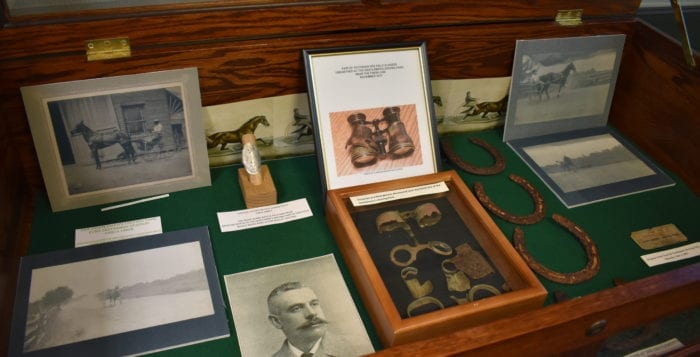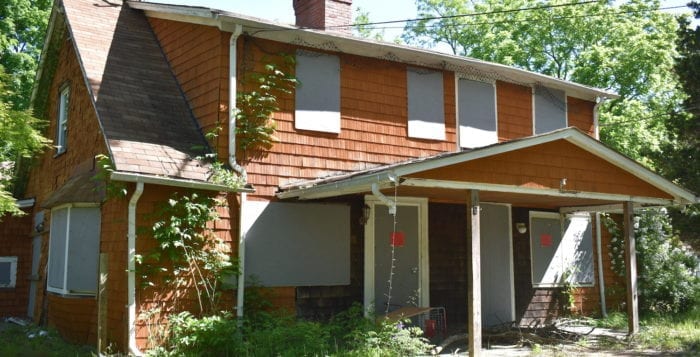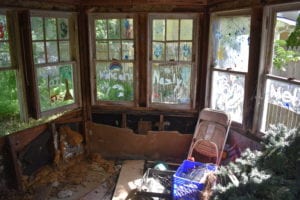If the old, black-and-white photos could speak, some would be crying. Others, perhaps, could be looking forward to the future.

For 10 years, Jack Smith, a Port Jefferson Station resident and retired teacher, built the historical society from the ground up. He collected countless documents and materials and became a leading figure in local history. The Cumsewogue Historical Society, named to reflect the old spelling of the original Native Americans in that area, would be at the head of numerous outreach projects, from advocating Brookhaven town buy the Gentleman’s Driving Park in Terryville to fighting to preserve two historical structures on Main Street in Port Jefferson Station. Smith was named one of TBR News Media’s persons of the year on two separate occasions.
But by the end of 2018, Smith said he had no real choice but to dissolve the historical society, leaving thousands of artifacts to the care of the Comsewogue Public Library.
Smith said the historical society’s near 10-year run ended for a number of reasons. One was the society’s space at the Comsewogue Union Hall had mold problems and was an ill place to store items of historical significance, it not being climate controlled with structural issues. The other was the charter renewal for the historical society required that the society have five board members to vote. Smith added it had gotten harder and harder to find people willing to serve. At the start of 2019, he was also planning a half-year-long trip, and there would be very few people who could have taken care of the artifacts.
“It was just a perfect storm” he said. “I was very disappointed it couldn’t continue.”
Smith, 69, said it had grown increasingly hard to get the community active in its events.
Nick Acampora, the president of the Greater Port Jefferson Historical Society, had worked for years alongside Smith on a number of projects. He said people are busy in this day and age with work, and many have little time for volunteering. While he added his group is fortunate in the amount of support it gets, he’s always worried for the future.
“It’s a tough time for all volunteer organizations,” Acampora said. “Even some of our board members, some of them have been doing it for 30 years. When one of them steps back someone needs to take over, and who do we have to pass the baton onto?”
Brookhaven town Councilwoman Valerie Cartright (D-Port Jefferson Station) said town officials will continue to work to preserve historical sites in the area, all the while praising Smith for his past work.
“The Cumsewogue Historical Society has laid the foundation for us to continue to highlight history,” she said.
Instead of letting all the artifacts fall to the wayside, Smith presented all artifacts as a deed of gift to the Comsewogue Public Library, which he described as one of the real community centers in the PJS/Terryville area.
Library’s new historical role
Debbie Engelhardt, the library’s director, said she has long agreed that should the historical society dissolve for any reason the library would take in its artifacts.
“So while they understood the town historian would take very good care of the items, there was concern they wouldn’t be as readily available to the local residents,” she said.
Lori Holtz, the exhibit coordinator and head of adult services at the library, made the connection that other historical societies often have deep roots and foundations in a community, leading to greater support, while the Cumsewogue Historical Society was born out of passion, it had that much more work to do, and needed that extra community support.
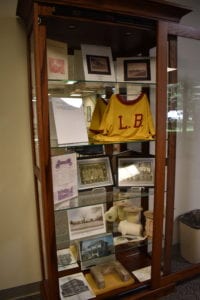
“What he [Smith] was doing which was really noble — he was trying to gather things that really haven’t been gathered all this time and trying to create something,” she said.
The library has displayed numerous items from the old historical society’s collection, including pictures and artifacts from the Comsewogue school district, pictures of the Gladyz family on their farm and even the rusted shell of binoculars from the old Gentleman’s Driving Park. The library plans to rotate these items in and out throughout the year.
However, the library isn’t stopping there. Holtz said they have future plans, including some things the historical society wouldn’t have been able to do, including scanning and digitizing some of the artifacts to make them available on the library’s website.
In honor of October being American Archives Month, the library is planning to put together an exhibit of several of the historical pictures and artifacts still not available at the library. The display will be available during regular operating hours.
“We’re thinking it’s not going to be a really heavy lift to continue what we were doing and hopefully do a little bit more,” Holtz said. “Hopefully more people in the community do come forth.”
Barbara Russell, the Brookhaven town historian said the group did the right thing by donating all its materials to the library.
“It takes a group of people to maintain a historical society,” Russell said. “They had a nice group of working members, but it was small, and you can’t have that small a pool of volunteers.”
Smith continues to be involved with his artifacts, taking the trip to the library when the directors need help identifying artifacts. Both library and Smith have long worked together since the beginning of the historical society doing displays and lectures, but the president of the dissolved society said even then he would have a hard time getting people to come to events.
Historical advocacy
Smith said while he will still continue to be active in the area, his advocacy days are largely over.
He and the historical society were involved in several projects, having been at the head of Brookhaven buying the Gentleman’s Driving Park property to help preserve it. Last year, Smith made a huge push to preserve 101 and 105 Main St. adjacent to the south side of the train tracks in Port Jefferson. Those buildings date to the early 1900s, one of which housed E.H. Rogers Feed Mill, a relic of the area’s agricultural roots. While the 2014 Port Jefferson Station Commercial Hub Study contained recommendations from local architects for preserving a number of those buildings, Smith had said last year they were under threat by local developers.
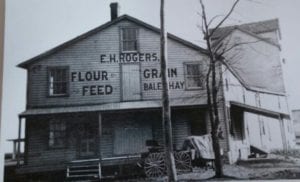
Sarah Kautz, the preservation director of Preservation Long Island, a nonprofit that advocates for protection and stewardship of historic sites, said Cumsewogue had reached out to them over those buildings looking for support. She added lacking support like the now defunct historical society to keep tabs on such projects impacts their ability to try and preserve such properties.
“For the work we do in helping to advocate for preservation across Long Island, we really depend on partners like that in local communities, because they’re the ones on the ground, they find out about these new proposals,” she said. “Advocacy really comes from them, the grass roots.”
Cartright said there are no new plans presented to the town about those properties on Main Street, but said she will work to protect those historic sites, along with maintaining the town-owned properties of the Gentleman’s Driving Park and Terryville Union Hall.
Acampora said he had conversations with Smith last year about those particular properties and had promised to work to preserve them. The news that his neighboring historical society had dissolved came as a shock to him and to the rest of the historical society’s board. He said his group will do its best to try and preserve those properties, along with other historical sites in the PJS/Terryville area.
“I’m hoping we can do something with those buildings on the south side of the tracks,” he said. “It’s going to be up to us, and that’s what we try to do with any of our old buildings — keep an eye on it and do what we can.”

